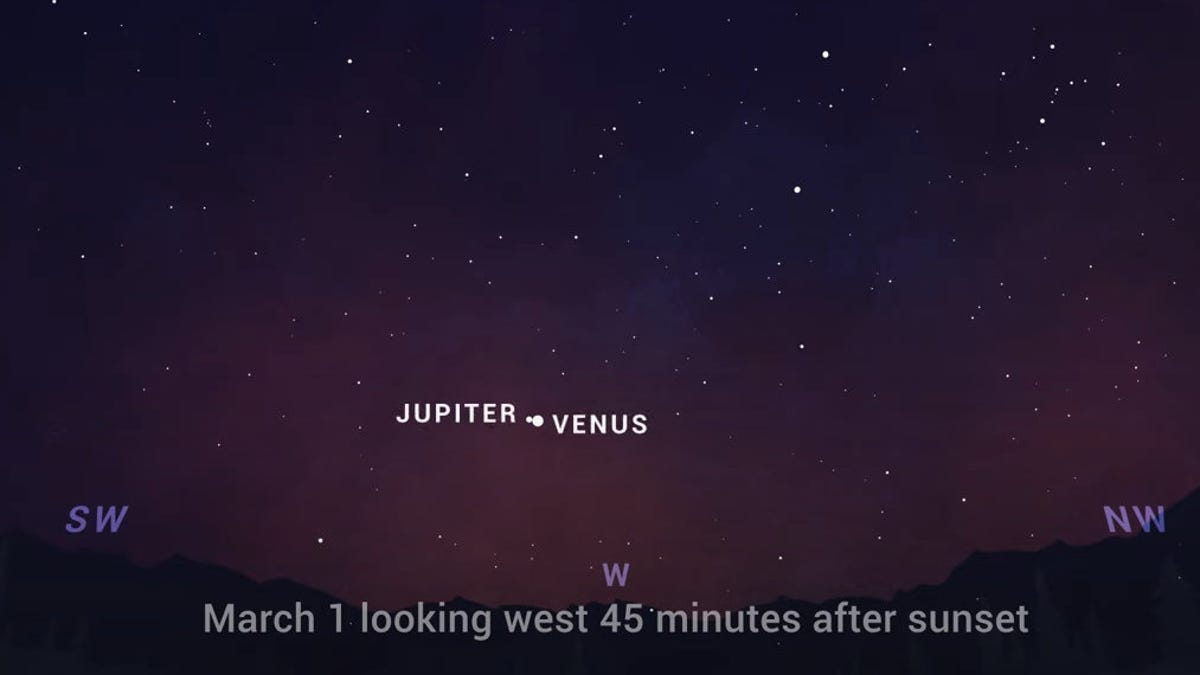How to See Venus and Jupiter Cozy Up in the Sky Tonight
The two planets will cuddle for a close conjunction on March 1.

NASA's illustration shows the closeness of Jupiter and Venus looking west about 45 minutes after sunset on March 1.
Venus and Jupiter are making beautiful music together in the night sky and are headed for a close conjunction on March 1 in which they'll appear to almost touch. The cosmic tango has made for lovely skywatching opportunities over the last couple of weeks.
NASA's February skywatching guide and video offer tips for enjoying the meeting of the planets. NASA says to look west in the hour or so after sundown. It helps that Jupiter and Venus are the brightest planets in the sky, so locating them should be pretty easy. You can always consult a stargazing app for an assist if needed.
The two planets posed with the crescent moon on Feb. 22, making for a scenic trio of celestial sights. The big moment will occur tonight when the conjunction of the planetary pair occurs.
The planets are plenty bright for naked-eye viewing, but pull out binoculars or a telescope if you have one handy. With the right conditions, you may be able to spot some of Jupiter's largest moons.
While Venus and Jupiter will appear to be near each other for their close conjunction on March 1, it's just a trick of the cosmos. The two planets are in reality extremely far apart and in no danger of bumping each other. As a bonus, you won't have to stay up late to enjoy the show.

